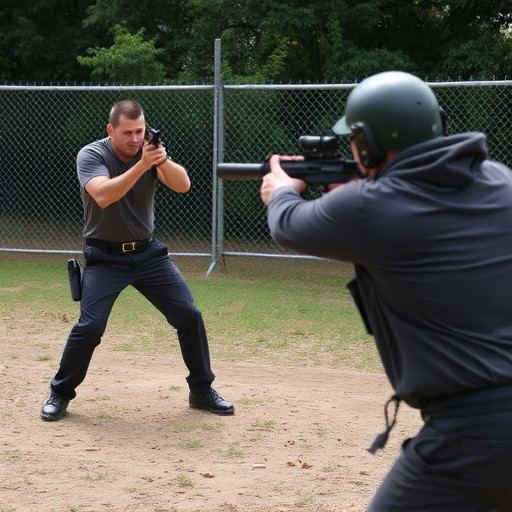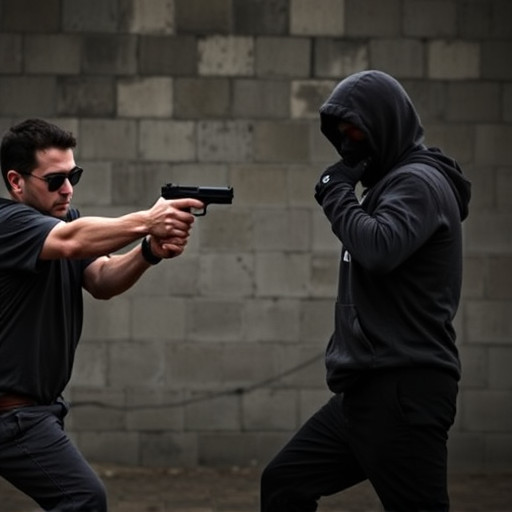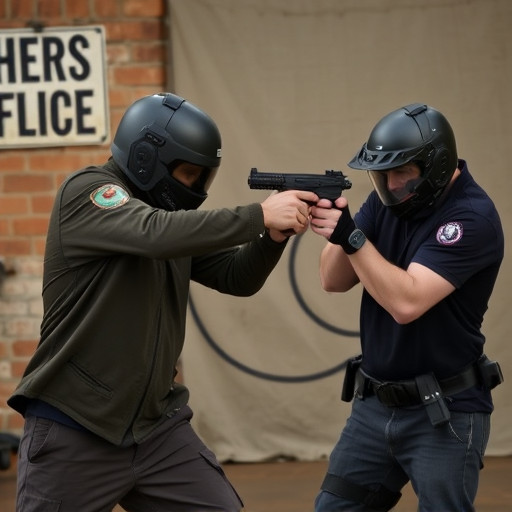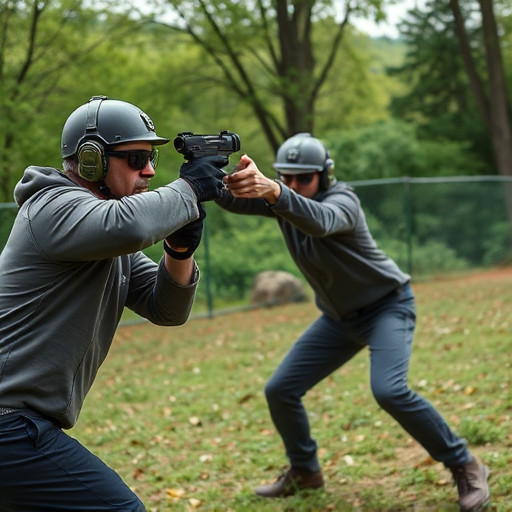Stun guns rely on key components like energy sources, electrodes, and control mechanisms for effectiveness. Proper charging using manufacturer-recommended chargers is vital for optimal performance, safety, and longevity. Balancing voltage and current, adhering to guidelines, ensures powerful yet safe shocks. Improper charging can cause battery damage, reduced effectiveness, or hazards. Safety measures include protective gear, keeping stun guns away from flammable materials, and avoiding modifications unless trained. Correct maintenance and charging techniques are crucial for user safety and optimal stun gun performance.
“Discover the powerful world of stun guns and their electric charge technology in this comprehensive guide. From understanding the fundamentals, including key components and operation, to exploring the science behind the shock—we demystify these devices. Learn about safety practices and the art of proper charging techniques to ensure optimal performance. Debunk common myths and uncover crucial specifications for choosing an effective stun gun. Know how to charge stun guns properly and be prepared.”
- Understanding the Basics of Stun Guns: Components and Functionality
- The Science Behind Electrical Charge: Safety Measures and Proper Charging Techniques
- Debunking Myths: Effective Stun Gun Specifications for Optimal Performance
Understanding the Basics of Stun Guns: Components and Functionality

Stun guns, also known as electric shock weapons, are designed to immobilize targets through the delivery of a powerful electrical discharge. Understanding their inner workings is crucial when it comes to proper use and maintenance. At their core, stun guns consist of several key components: an energy source, electrodes, and a control mechanism. The energy source, typically a rechargeable battery, powers the device. Electrodes, strategically placed on the instrument’s surface, conduct electricity to make contact with the target. When activated, the control mechanism releases a high-voltage, low-current electric pulse through these electrodes, causing temporary muscle spasms and disorientation in the target.
Proper charging of the stun gun is a fundamental aspect of its functionality and longevity. Users should adhere to the manufacturer’s guidelines for charging, which often involves connecting the device to a standard power outlet using a provided charger. This process ensures the battery reaches its full capacity, readying the stun gun for use when needed. Regular charging cycles not only maintain battery life but also contribute to the overall reliability of the instrument. Learning how to charge stun guns properly is an essential step in ensuring these devices are effective and safe when used appropriately.
The Science Behind Electrical Charge: Safety Measures and Proper Charging Techniques

The Science Behind Electrical Charge: Safety Measures and Proper Charging Techniques
Electrical charge weapons, such as stun guns, operate by delivering a powerful electric current through a conductive path to disrupt an opponent’s neuromuscular system. This results in temporary paralysis or disorientation, providing the user with a crucial window of opportunity. Understanding the science behind this technology is paramount for both effectiveness and safety.
Proper charging techniques are essential for optimal performance and longevity of the device. Users must adhere to manufacturer guidelines, ensuring the weapon is charged under controlled conditions. Inaccurate or improper charging can lead to reduced effectiveness, battery damage, or even safety hazards. Safety measures include wearing protective gear during charging, keeping the device away from flammable materials, and never attempting to modify or disassemble the weapon unless specifically trained and authorized.
Debunking Myths: Effective Stun Gun Specifications for Optimal Performance

Debunking Myths about Stun Gun Specifications
When it comes to stun guns, there are many misconceptions surrounding their effectiveness and performance. One common myth is that higher voltage or amp settings automatically translate to a more powerful stun. However, this isn’t entirely true; excessive voltage can actually reduce the weapon’s effectiveness and safety. The key lies in achieving the right balance—optimizing both voltage and current to ensure a strong stun without compromising user safety.
Proper charging is another crucial aspect often overlooked. Unlike traditional batteries, stun guns require specific charging protocols. Following the manufacturer’s guidelines for how to charge stun gun properly ensures optimal performance. Using incorrect chargers or ignoring charging instructions can lead to reduced battery life, lower voltage output, and even potential damage to the device. Remember, a well-maintained stun gun not only performs better but also ensures your safety during its use.
In understanding the basics, science, and myths surrounding stun guns, it’s clear that proper charging techniques are essential for optimal performance. Knowing how to charge a stun gun correctly ensures its reliability and effectiveness as a self-defense tool. By following the right procedures, users can maximize the impact of their stun guns while minimizing potential risks. Remember, the key to a stun gun’s success lies not only in its specs but also in the care taken during charging and usage.
